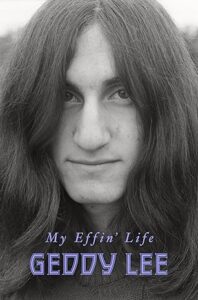Art is in the ear of the beholder, but there’s one song you have to appreciate. It’s called YYZ, and whether you like it or not, you cannot deny its genius.
The Band
Think Canada, and visions of ice hockey, Tim Hortons, and maple syrup come to mind. Now toss them aside and make room for the Great White North’s greatest gift to humanity: Rush.
The story of this band, captured in the autobiography below, is just as unlikely as that of the country from which it hails.
- A shy, scrawny Jewish kid, the son of Holocaust survivors, trying to find himself in 1960s Toronto. Things didn’t go well at first. He dropped out of high school, discovered atheism (and drugs), and was let go by the band that would eventually make him famous.
- Another child of immigrants—these ones from Yugoslavia—who managed to stay in high school at the behest of his parents but much preferred the guitar.
- And finally, a random Canadian dude from the steel town of Hamilton who, after the band’s initial drummer left, showed up for his audition with his drum set in garbage bags.
It wasn’t the most photogenic trio of all time, but the kids worked hard, breaking into the Toronto scene and then the US one. They occasionally forgot to add hooks and melodies, and the scrawny kid had a piercing—or perhaps grating—voice. Yet one thing was for sure—they could dominate their instruments.
The prog rockers could do what other bands couldn’t, and experimentation and artistry always trumped that which commercial forces demanded. The result was 19 albums of sci-fi infused, form-defying, technically challenging, critic-dividing, fan-inspiring music and/or noise.
Zero Grammys later, the Canadian legends ultimately found a home in the Rock and Roll Hall of Fame.
The Airport
Back to Toronto, the behemoth on the northern shores of Lake Ontario. It’s Canada’s largest and North America’s fourth largest city (behind Mexico City, New York City, and Los Angeles).
Such a vast collection of humans warrants a worthy airport, known as Toronto Pearson International Airport. Perhaps the International Air Transport Association (IATA), the organization that issues three-letter airport codes, would gift the city a TOR or a PEA?
Try again.
Make it YYZ.
The first Y is a Canadian thing, maybe a reference to a time when airports with weather stations—important for safe landings—could be indicated with a Y (for yes).
And the remaining YZ?
That’s a shout out to the Canadian National Railway station that once lived on the grounds of Pearson, the YZ being its Morse Code identifier.
The Song
In keeping with the Morse Code theme, as Rush once approached Pearson in a small aircraft, the band members happened to tune in to the inflight radio which was pumping out YYZ in Morse Code.
Y: – . – –
Y: – . – –
Z: – – . .
(Repeat)
And thus was born a song, also known as track number three on the band’s eighth album, Moving Pictures.
Have a listen to the beginning, starting with crotales (cymbals), joined soon thereafter by an electric guitar. You’ll recognize the code above.
And from there comes an instrumental masterpiece, one that was a staple of live shows and the perfect reprieve for those who, much like Radiohead fans with Thom Yorke, were looking for a breather from the vocals.
The bottom line: Brilliance, Canadian style.

2 Responses
Wow. Never knew the back story for YYZ. I am partial to YHZ for my Hometown, Halifax, Nova Scotia on the East Coast. And so the H.
Ah, yes. YHZ is definitely on my bucket list as part of my “Explore Canada” game plan!